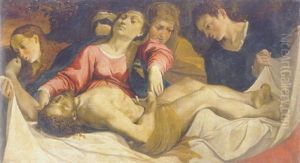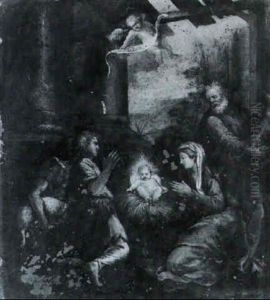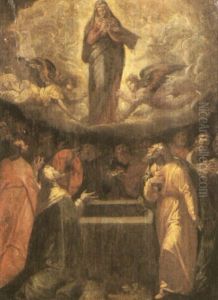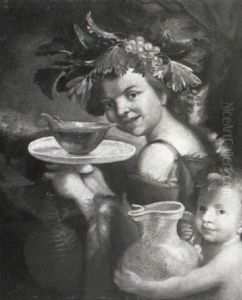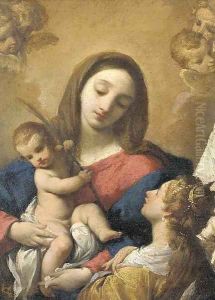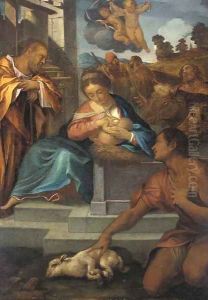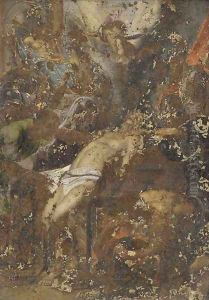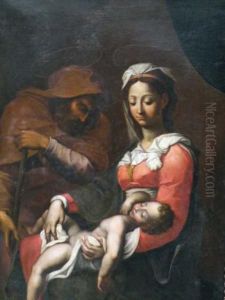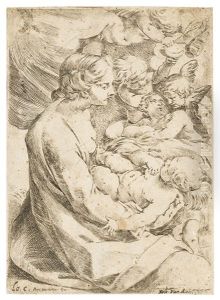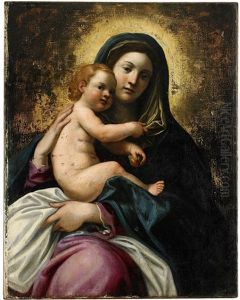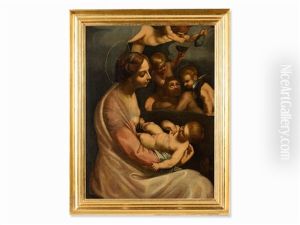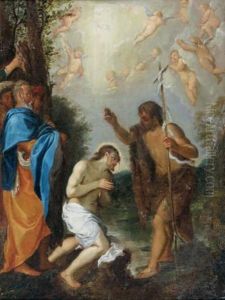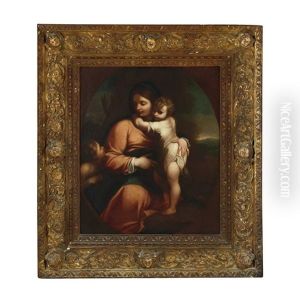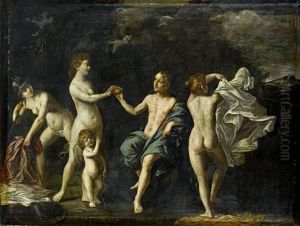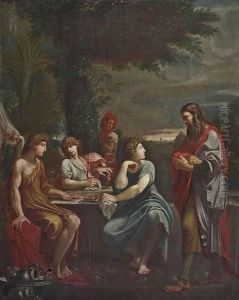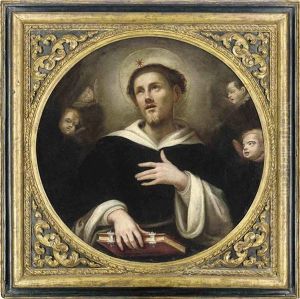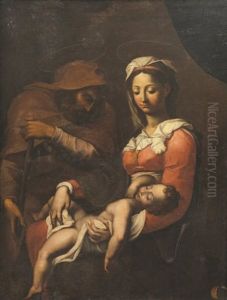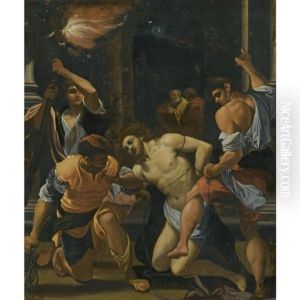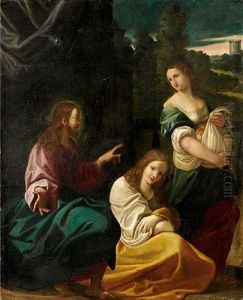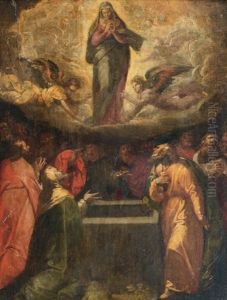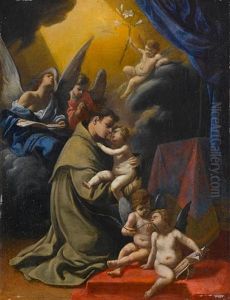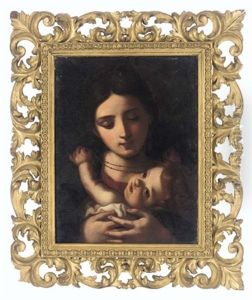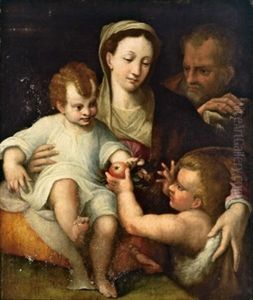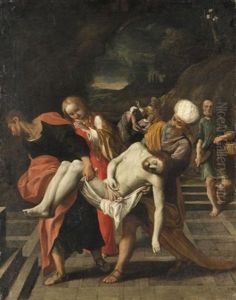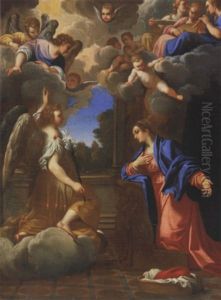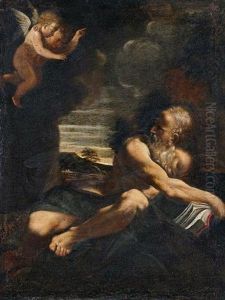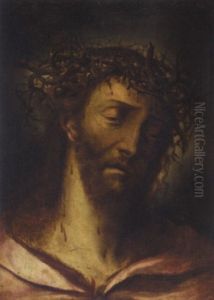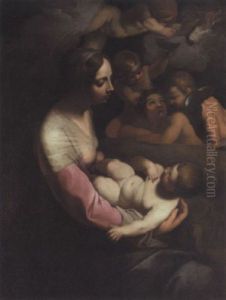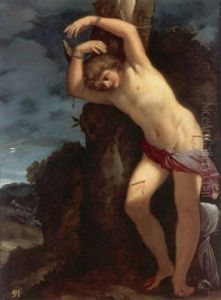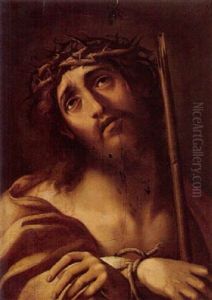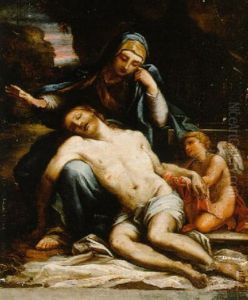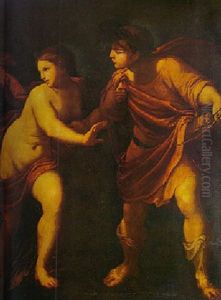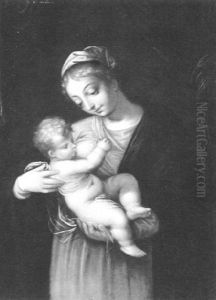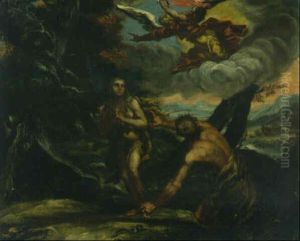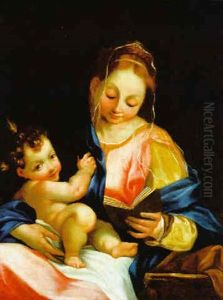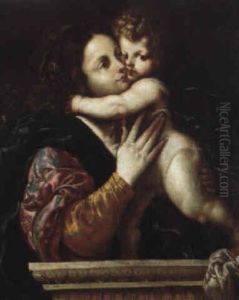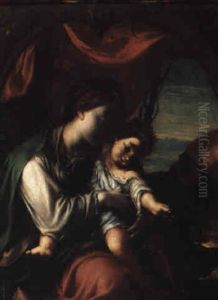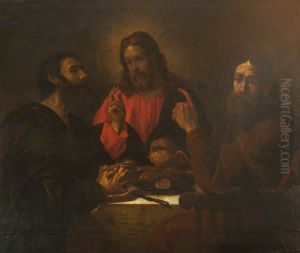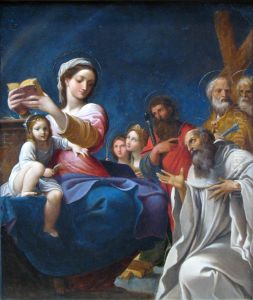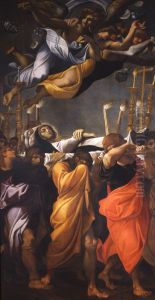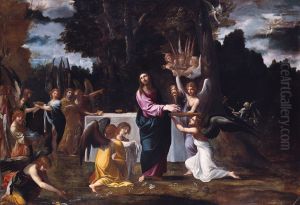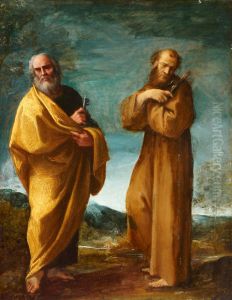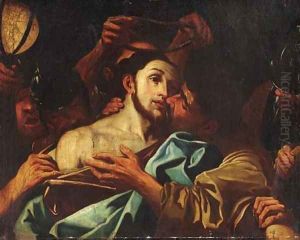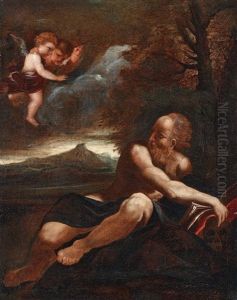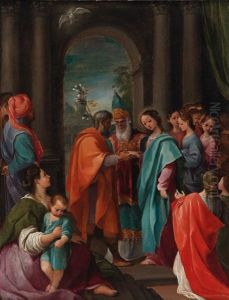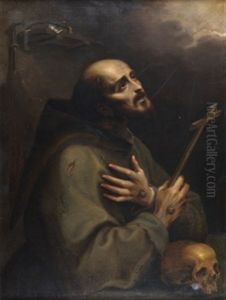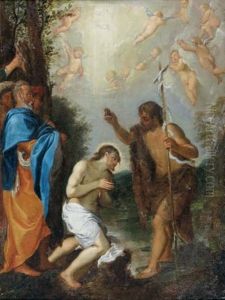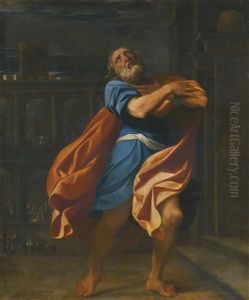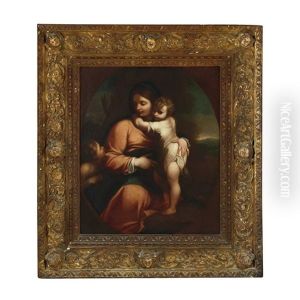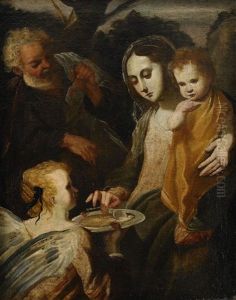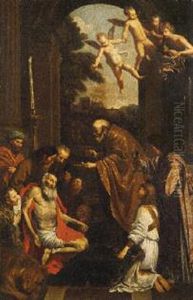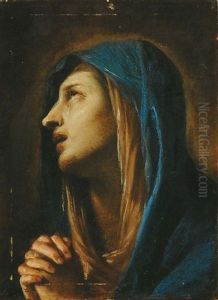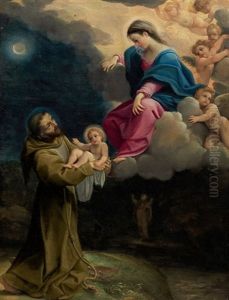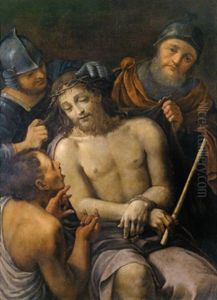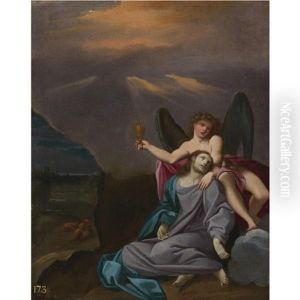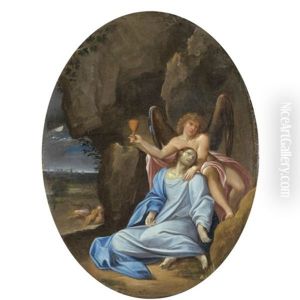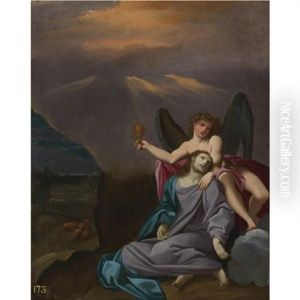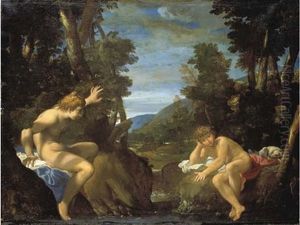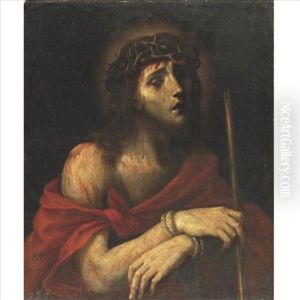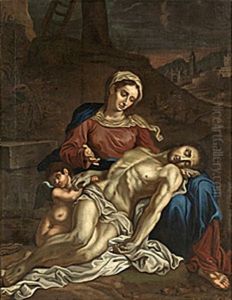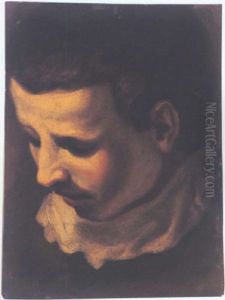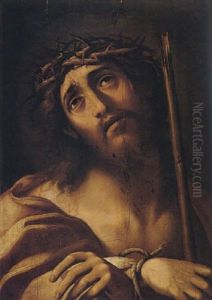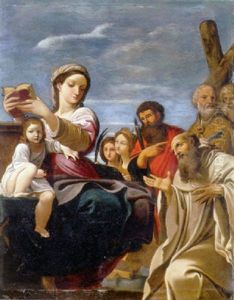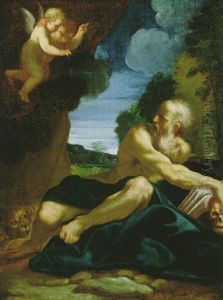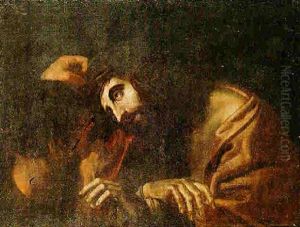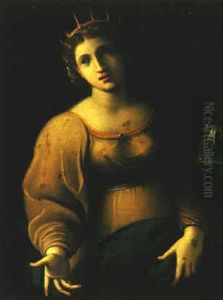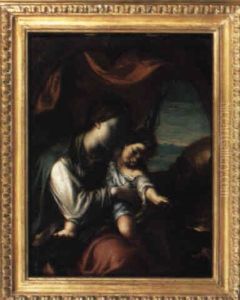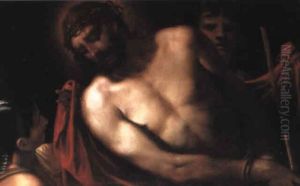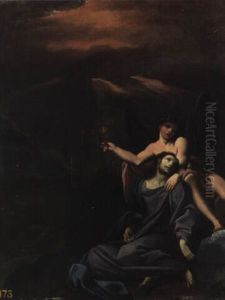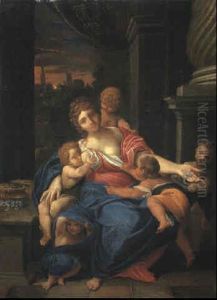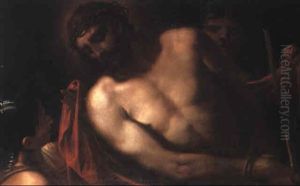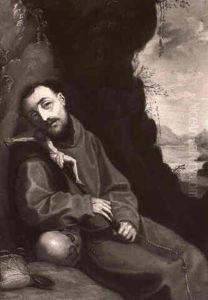Ludovico Carracci Paintings
Ludovico Carracci was an Italian, early-Baroque painter, etcher, and printmaker born in Bologna in 1555. He was a member of the Carracci family, which played a pivotal role in establishing the Bolognese School. Ludovico, along with his cousins Agostino and Annibale Carracci, sought to move away from the mannerist style that was prevalent during the mid-16th century, advocating for a return to the classicism of the High Renaissance with a new emphasis on naturalism and emotional expression.
Ludovico initially trained in Bologna with Prospero Fontana, who was a prominent Mannerist painter. He later moved to Florence for a brief period to study under the Mannerist artist Bartolomeo Passarotti. His early works show the influence of these experiences, but he soon began to move towards the more naturalistic style that would come to define the Carracci school.
In 1582, Ludovico, with his cousins, founded the Accademia degli Incamminati (Academy of the Progressives) in Bologna, which was instrumental in the development of the Baroque style in Northern Italy. The academy aimed to reform art through a synthesis of the study of nature, the rigorous academic training of the Renaissance, and the study of the works of Raphael, Correggio, and Titian.
Ludovico's work is characterized by its emotional depth and the robust, earthy quality of his figures. He was also a skilled colorist and draftsman. Some of his major works include the frescoes in the Palazzo Fava in Bologna and the altarpiece of the Madonna dei Bargellini. His religious compositions are noted for their sense of humanity and tenderness, while his mythological works exhibit a more playful and imaginative approach.
Aside from his contributions to painting, Ludovico was a talented printmaker and etcher, and his works in this medium helped disseminate the Carracci style throughout Italy and beyond. His influence extended to later artists, such as Guido Reni and Domenichino, who were among his pupils.
Ludovico Carracci's career was marked by a constant striving for an art that was both emotionally engaging and grounded in nature. He continued to paint and teach in Bologna until his death in 1619. His legacy is integral to the transition between the Renaissance and Baroque periods, and his work remains a testament to the enduring power of the Carracci reform in art.
